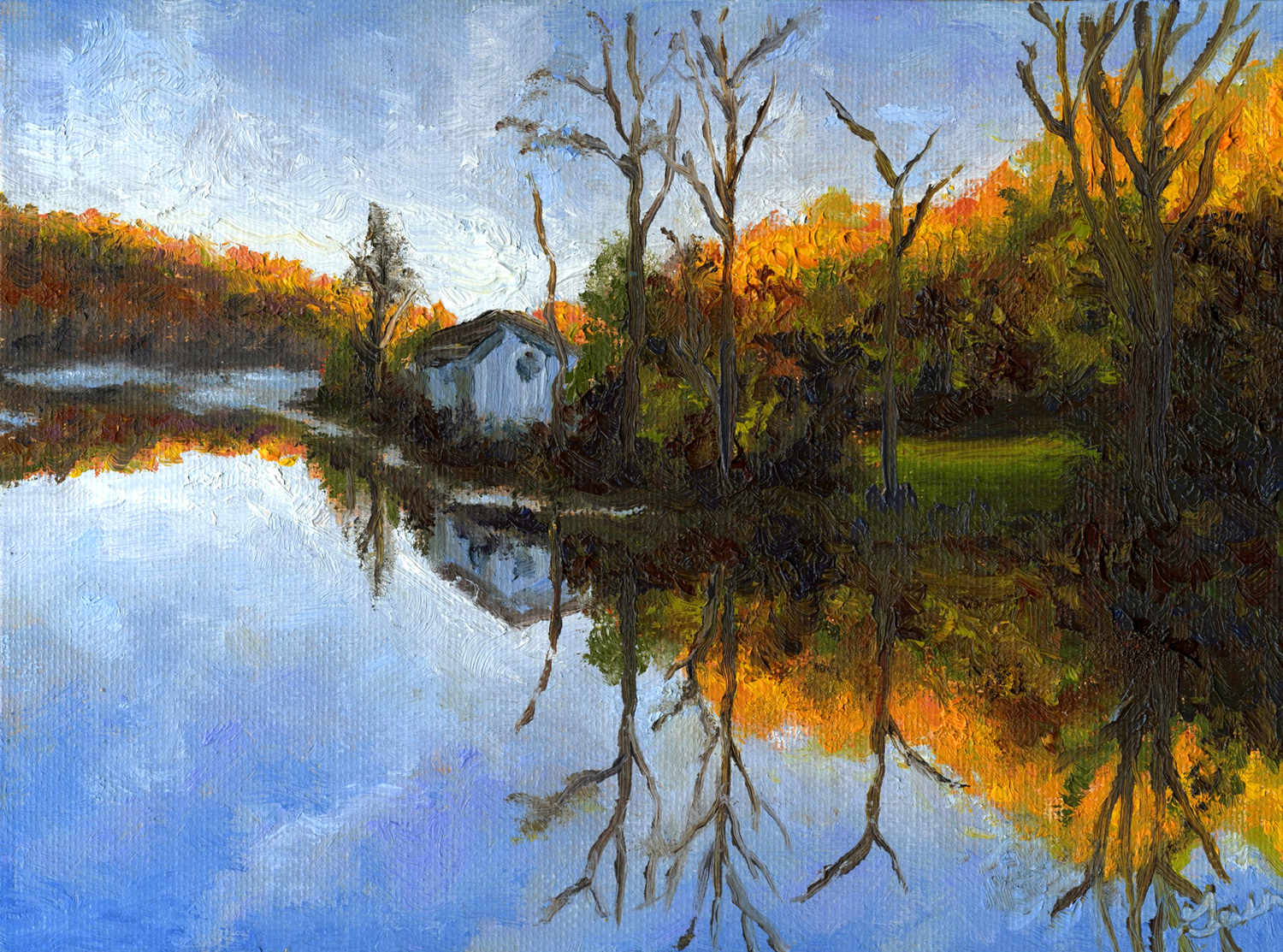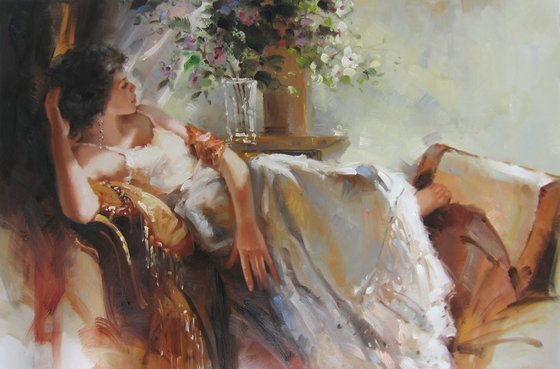Check Out Striking Human-Form Oil Paintings for Sale
Check Out Striking Human-Form Oil Paintings for Sale
Blog Article
Checking out Everything About Oil Paints: A Guide to Understanding Their Beauty and Value
Oil paints have astounded target markets for centuries, providing a peek into the creative proficiency of numerous ages. Their rich background is linked with cutting-edge strategies and extensive emotional expression. Comprehending the products and approaches behind these art work can improve recognition. Furthermore, the market for oil paints offers opportunities for collectors and financiers alike. As one discovers this interesting world, the concern occurs: what makes an oil paint absolutely useful?
The Background of Oil Painting: A Journey Via Time
Oil paint has roots that date back to old times, it truly grew throughout the Renaissance, when artists uncovered its adaptability and rich color possibility. Early examples can be traced to the 7th century, with strategies progressing significantly throughout societies. The medium came to be famous in Northern Europe in the 15th century, particularly with the jobs of artists like Jan van Eyck, that originated its use for in-depth realism and lively shades. This period marked a departure from tempera paints, enabling greater depth and structure. As oil paint spread, it influenced numerous artists, leading to masterpieces by distinguished numbers such as Leonardo da Vinci and Rembrandt. The tool's legacy continues, shaping the art world well right into modern times.
Understanding Oil Paints: Materials and Techniques
As artists check out the globe of oil paints, they run into a varied range of materials and techniques that define this medium. The main parts of oil paint include pigments, which offer color, and drying oils, such as linseed, that bind the pigments and assist in application. Numerous additives can change the paint's texture and drying time, improving convenience. Techniques like glazing, where transparent layers are developed up, and impasto, which includes using thick paint, enable different visual effects. Additionally, making use of brushes, palette knives, and even fingers can create unique textures and finishes. Recognizing these materials and techniques makes it possible for musicians to completely reveal their imagination and accomplish the desired influence in their art work.
The Function of Color in Oil Paintings
Color plays an essential role in oil paints, affecting both visual allure and emotional resonance. Recognizing color concept fundamentals, including the partnerships between hues, can boost an artist's capacity to communicate mood and environment. Additionally, understanding color mixing strategies enables better deepness and richness in a paint's palette.

Shade Theory Essential
Recognizing color concept is necessary for artists collaborating with oil paints, as it develops the structure for producing unified and aesthetically appealing structures. Shade theory includes the research of exactly how colors communicate, the shade wheel, and the connections between primary, second, and tertiary shades. Musicians utilize corresponding colors to boost contrasts and produce centerpieces, while comparable shades advertise unity and cohesiveness within an item. Furthermore, the principles of great and warm colors affect the perception of depth and room in a painting. Realizing these principles enables musicians to manipulate color properly, guiding the customer's eye and connecting their intended message. Proficiency of shade theory inevitably enriches an artist's capability to share feelings and ideas through their work.
Psychological Effect of Color
The emotional effect of color in oil paints plays a critical function in how customers attach and view with art work. Colors stimulate specific feelings and state of minds, influencing the customer's emotion. For instance, cozy tones like reds and oranges can develop a feeling of heat and energy, while amazing tones such as blues and greens usually stimulate calmness or self-contemplation. Artists strategically pick shade schemes to boost narrative aspects, assisting the audience's emotional journey. The saturation and comparison of shades even more enhance these results, attracting focus and producing emphasis. Ultimately, the interplay of shades in oil paints not just improves their aesthetic allure yet likewise acts as a powerful medium for psychological expression, improving the viewer's experience and interpretation.
Color Mixing Techniques
While many facets of oil paint contribute to the overall make-up, grasping color blending methods is crucial for attaining wanted impacts and deepness. Shade blending can be approached via different methods, consisting of the subtractive and additive processes. Additive blending entails integrating colors of light, while subtractive blending relies upon pigments, where shades blend to produce new tones. Artists usually make use of a restricted palette to develop harmonious jobs, understanding the partnerships between key, additional, and tertiary shades. Techniques such as glazing and scumbling additionally enhance depth and luminosity. By skillfully mixing shades, an artist can evoke feelings, create prime focus, and achieve a sense of realistic look, eventually elevating the paint's emotional and visual impact.
Famous Oil Painters and Their Iconic Functions

Famous for their mastery of color and technique, oil painters have produced a few of the most renowned artworks in history. Popular artists like Vincent van Gogh captivated target markets with his stirring brushwork in "Starry Night," while Claude Monet's "Perception, Dawn" laid the groundwork for Impressionism. Leonardo da Vinci's "Mona Lisa" stays an enduring sign of imaginative wizard, showcasing his skill in capturing human expression. Meanwhile, Rembrandt's "The Night Watch" highlights his ingenious use of light and darkness. Other noteworthy figures consist of Pablo Picasso, that reinvented contemporary art with his bold experimentation in jobs like "Les Demoiselles d'Avignon," and Georgia O'Keeffe, whose lively depictions of blossoms and landscapes aided specify American innovation. Each musician's one-of-a-kind design added greatly to the oil painting landscape.
Just how to Review the Quality of an Oil Painting
Reviewing the high quality of an oil paint includes a careful analysis of craftsmanship strategies, in addition to an analysis of shade and structure. Observing brushwork, layering, and the application of paint can expose the musician's skill degree. Furthermore, the interaction of colors and the total plan of elements add considerably to the paint's aesthetic value.
Analyzing Workmanship Methods
A thorough evaluation of workmanship techniques is important for identifying the quality of an oil paint. Critics ought to initially analyze the application of paint; thick, distinctive brushstrokes may suggest a competent hand, while extremely uniform applications can indicate an absence of deepness. oil paintings for sale. The layering technique is likewise essential; the presence of lusters and differed thickness can enhance brightness and intricacy. Additionally, the high quality of the products made use of, such as the canvas and pigments, plays a significant function in resilience and general visual. Focus to detail in components like sides and shifts between colors mirrors the musician's dedication to their craft. Ultimately, these methods add to the paint's psychological impact and market price, acting as indicators of the artist's skill and intent
Examining Shade and Make-up
While reviewing the quality of an oil painting, one should concentrate on the interaction of shade and composition, as these elements are basic to the artwork's total impact. Color choices can evoke feelings and establish mood; for that reason, the musician's scheme must be taken a look at for consistency and contrast. A well-balanced structure directs the customer's eye and develops a feeling of unity. Artists typically use strategies like the rule of thirds or leading lines to enhance visual rate of interest. In addition, the usage of light and darkness can add deepness, boosting the three-dimensionality of the paint. Inevitably, an effective oil paint weds shade and make-up, involving the visitor and welcoming a much deeper recognition of the musician's vision and strategy.
Caring for and Preserving Oil Paintings
Correct treatment and preservation of oil paintings is important for keeping their honesty and durability. To protect these art work, it is essential to display them away from direct sunshine, which can create fading and staining. Maintaining a secure setting with controlled temperature and read more moisture additional aids in preventing damages. Cleaning up should be done delicately using a soft, completely dry fabric, avoiding any harsh chemicals that might harm the paint or varnish. Routine inspections for signs of degeneration, such as fracturing or flaking, are a good idea. When keeping or transferring oil paints, correct padding and framework are necessary to stay clear of physical harm. Ultimately, attentive treatment adds to the visual charm and worth of oil paintings gradually.
The Marketplace for Oil Paintings: Spending and accumulating
Understanding the marketplace characteristics for oil paintings is vital for financiers and collectors alike. The worth of these artworks is affected by numerous aspects, including the artist's online reputation, historical importance, and existing trends. Collection agencies commonly look for items that resonate personally while considering prospective appreciation in value. Public auctions and galleries act as main places for acquiring and marketing, with rates fluctuating based on demand and rarity. Investing in oil paintings requires research right into the marketplace, along with an understanding of authenticity and provenance. Additionally, emerging musicians might supply opportunities for considerable returns, while developed names can command high prices. In general, a calculated technique to gathering can produce both visual pleasure and financial rewards.

Often Asked Questions
What Are the Ecological Impacts of Oil Painting Materials?
The environmental impacts of oil painting products include the launch of volatile natural substances (VOCs), dangerous waste generation, and source extraction for pigments. These elements contribute to contamination and eco-friendly deterioration, elevating concerns amongst eco mindful musicians and consumers.
Exactly How Do Various Canvases Affect Oil Painting Outcomes?
Various canvases influence oil painting results substantially. Surface, structure, and absorbency high quality can modify paint application, drying times, and color vibrancy. Artists typically select particular canvases to achieve wanted impacts and boost their imaginative expression.
Can Oil Paintings Be Recovered if Damaged?
If damaged, Oil paints can certainly be restored. Specialist conservators make use of different techniques to fix splits, clean surface areas, and address staining, ensuring that the artwork preserves its initial elegance and value for future generations.
What Are the Indicators of an Original Oil Paint?
The signs of an initial oil painting consist of visible brush strokes, structure variations, and an irregular canvas weave (oil paintings for sale). Additionally, credibility might be confirmed through provenance, signatures, and the visibility of a varnish layer special to oil tools
Exactly How Has Technology Influenced Modern Oil Painting Techniques?
Modern technology has actually significantly affected modern oil paint strategies by presenting digital devices for planning, improved products for texture and durability, and on-line systems for sharing and marketing art, consequently increasing artists' innovative opportunities and audience reach. Oil paint has origins that date back to ancient times, it really prospered during the Renaissance, when artists found its convenience and rich color capacity. The psychological impact of color in oil paintings plays an essential function in just how viewers attach and perceive with art work. While lots of aspects of oil painting add to the overall composition, grasping shade blending strategies is essential for accomplishing preferred impacts and deepness. Reviewing the high quality of an oil paint entails a mindful assessment of workmanship methods, as well as an evaluation of color and structure. While examining the top quality of an oil paint, one have to concentrate on the interaction of shade and make-up, as these components are basic to the art work's total influence.
Report this page